Happy National Donut Day! But rather than celebrating with classic donuts, we decided to make these sweet potato mochi pancakes/ hotteok (호떡). They're mildly sweet and satisfyingly chewy, with a brown sugar, cinnamon, and nut filling.
Now, let's dive into making these mochi pancakes!
What is mochi and what texture does it have?
Mochi is a Japanese term for pastries made from short grain, sweet, or glutinous rice. You may wonder what's the difference between these three types of rice (short, sweet, glutinous)? There's actually no difference! These rice classifications are all used interchangeably to describe the sticky texture of the rice after they're cooked. We usually refer to them as glutinous rice to avoid confusion.
Although mochi is a Japanese term, pastries made of glutinous rice is popular and widespread throughout east Asian. But in general terms, mochi type pastries are stretchy and chewy (in a good way) in texture. They are also mildly sweetened whether they're savory or sweet mochi.

What is hotteok (호떡)?
Hotteok (호떡) is a Korean yeast leavened pancake, traditionally filled with a brown sugar cinnamon. Yes! Basically like a cinnamon roll, but pancake style. These days you can find hotteok filled with all sorts of fillings like red bean paste, cheese, vegetables and meat, japchae, etc.
Use glutinous rice flour.
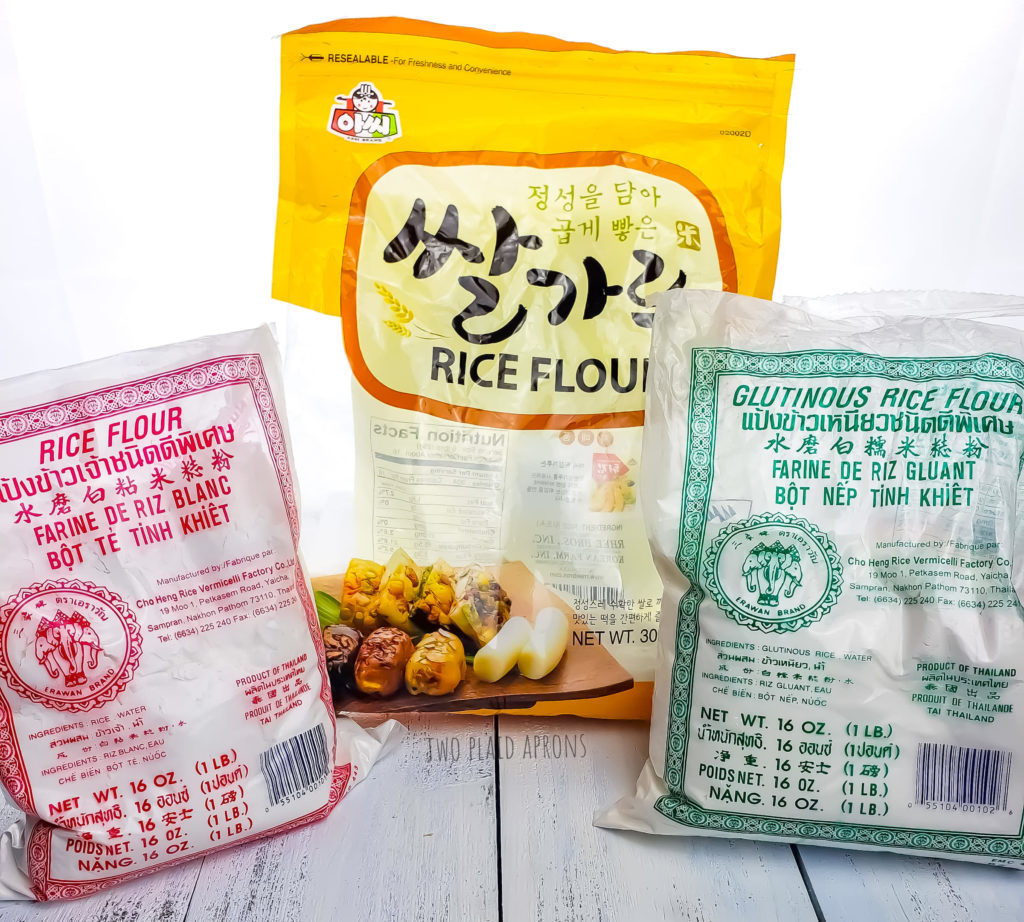
There are many different kind of rice flour, and I feel you. It can be quite confusing. For this sweet potato mochi pancake, you need glutinous rice flour. Regular rice flour and regular all-purpose flour will not achieve the same texture as glutinous rice flour.
Vegetarian, vegan, and gluten-free!
This recipe is dairy-free, vegan, vegetarian...AND gluten-free! No eggs, no yeast, and no butter is required for this sweet treat. And because these mochi pancakes are made of glutinous rice flour, it is gluten-free! You may wonder, "But it said glutinous!" Don't be alarmed! Glutinous in this context doesn't mean the rice flour contains gluten. It simply refers to the texture of the rice/ rice flour once it's cooked, which is sticky and tacky.
What are other ways to cook my sweet potato?

We recommend slicing the sweet potato to about ¼ inch thickness and steaming them in a heatproof bowl. Steaming cooks the sweet potato relatively quickly and keeps the sweet potato flavor concentrated. But if you don't mind the sweet potatoes loosing some flavor or if you have time, you can boil or bake the sweet potato.
How do I know if my sweet potatoes are cooked?
If you sliced the sweet potatoes to about ¼ inch thickness, it should take no more than 15 minutes to cook. To check if the potatoes are cooked, poke the sweet potatoes with a fork or chopsticks. If it goes through smoothly, the sweet potato is cooked.
Tips to make the perfect sweet potato mochi pancakes/ hotteok (호떡):
- Make sure the dough gets flattened to about ¼ inch and no thinner than ⅕ of an inch. If your dough is too thick, you won't be able to fill it with much filling. And too thin will risk your mochi pancake tearing and leaking the filling.
Best practice is to flatten the dough to about ¼ inch thick or a tad thinner, then fill it with about 1 Tablespoon of filling.
- After filling the mochi pancakes, pinch the edges of the dough together to seal the filling.
- Pro tip: Gently squeeze the pancake in between your palms after sealing the dough to compact the filling so that there's less chances of the filling leaking out.
- Roll the dough back into a ball, then gently flatten the ball into a disc about ½ inch to ¼ inch thick. The thinner the disc, the faster the mochi pancakes will cook.
- If there any cracks around the edges, pinch it together to seal the hole.
How do I know if the mochi pancakes are done?
When the sweet potato mochi pancakes are raw, the dough will look opaque and a light orange. Once cooked, the entire pancake should look oranger and translucent. The pancake should also feel slightly sticky but springy if you press on it. Eventually, if you cook the pancakes long enough and the filling becomes really hot, the mochi pancake sometimes expand into a ballon.
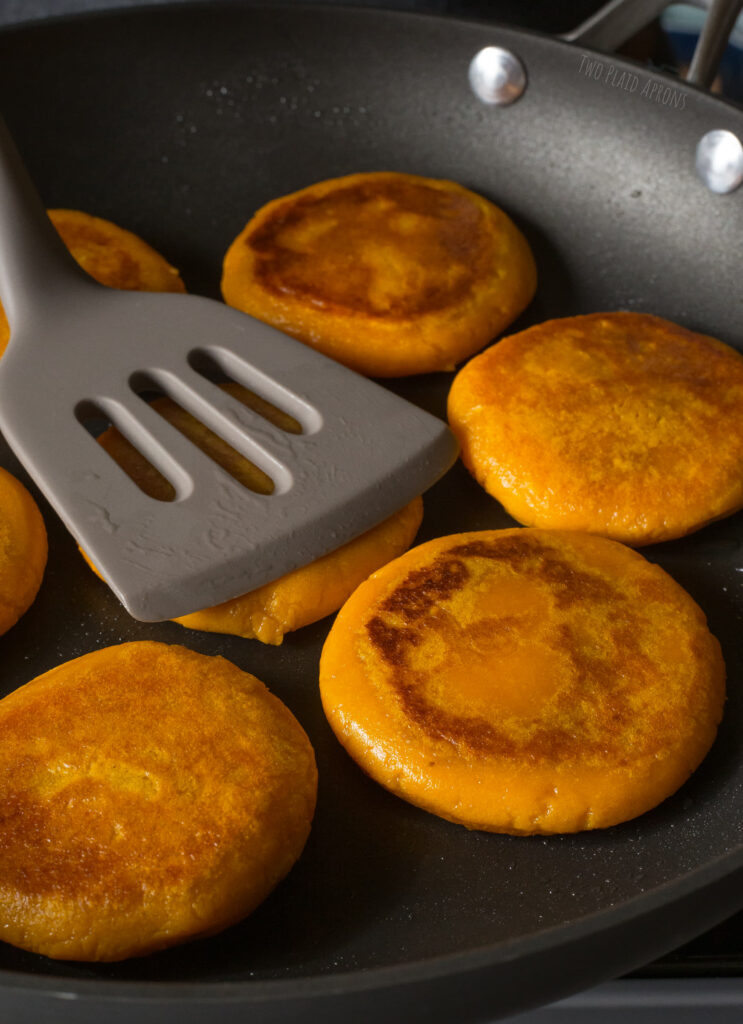
How to store leftover sweet potato mochi pancakes?
If you end up making a large batch of these mochi pancakes, you can either freeze it or refrigerate it.
To store them for later, individually wrap each pancake in plastic wrap and store them in an airtight container. Refrigerating will keep them good for 3-4 days and freezing will keep them good up to 1 month. Alternatively, if you don't want to individually wrap each one to be frozen, you can freeze the mochi pancakes on a lined sheet pan or plate. Then, collect and store the pancakes, while frozen, into airtight containers.
To reheat, simply microwave refrigerated mochi pancakes for about 15-25 seconds on high or 30-40 seconds for frozen ones.
If you're looking for other other Asian desserts, check these out:
Or try our Bailey's cinnamon sugar donuts if you're in a donut mood!
Cook with love!
Mei ❤️
If you’ve made this recipe or any recipe from our blog, please tag us on Instagram @twoplaidparons! We would love to see your creations! It absolutely makes our day! 🥰
📖 Recipe
Sweet Potato Mochi Pancakes with Brown Sugar Nut Filling
Ingredients
For the filling:
- ¼ cup roasted cashews, roughly chopped (or preferred nuts)
- 2 Tablespoon brown sugar (light or brown)
- 1 Tablespoon creamy peanut butter (or other nut butter)
- ½ teaspoon ground cinnamon
- Pinch of salt
For the sweet potato rice cake:
- 8 ounce sweet potato, peeled (about a medium size sweet potato)
- 1 teaspoon brown sugar (light or dark)
- Pinch of salt
- 1 skimp cup glutinous rice flour
Instructions
For the filling:
- Mix together all the ingredients until thoroughly combined. Set aside.*The cashew or other nuts can be chopped roughly or finely to your preference.*
For the sweet potato rice cake:
- Cut the sweet potato into ¼ inch slices. Arrange the slices in a heatproof bowl and steam the sweet potato on high heat for about 15 minutes or until you can easily pierce them with a fork.
- Transfer the steamed sweet potato to a mixing bowl. Add the sugar and salt and mash the sweet potato until it's a puree.
- Add the glutinous rice flour to the mashed sweet potato and mix with a fork or chopsticks until the dough turns shaggy. Let the dough cool until it's comfortable to work with.
- Once the dough is cool enough for you to comfortably work with, knead the dough onto itself until it becomes one smooth dough. The dough will be just barely tacky.
- Divide the dough into 7 even pieces and roll them into balls. Working with one piece of dough at a time, flatten them with the palm of your hands until they're roughly ¼ inch thick. *Use your fingers if needed to flatten out thicker spots. It may be easier if you keep the center of the dough thicker than the edges.*
- Fill the flattened dough with about 1 Tablespoon of filling, then pinch together the edges to seal the dough.
- After sealing the dough, roll the filled dough into a ball. Then, gently flatten the ball in a disc about ½ to ¼ inch thick. Repeat with remaining dough and filling.
- In a nonstick pan over medium to medium low heat, add a small amount of oil. Spread the oil around with a paper towel to evenly distribute.Cook the mochi pancakes on each side for about 3-5 minutes until both sides are golden brown and springs back when poked.Remove the mochi pancakes from the pan and place them on some paper towels to drain excess oil.
- Serve the sweet potato mochi pancakes while they're hot. Enjoy!


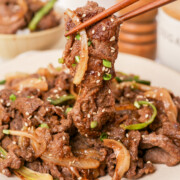

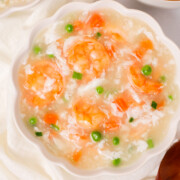

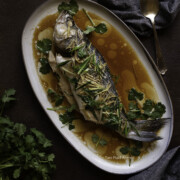
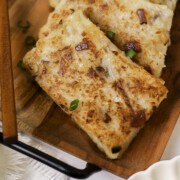
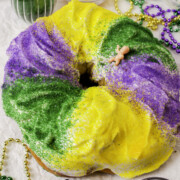
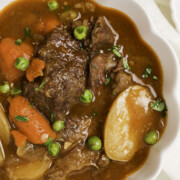
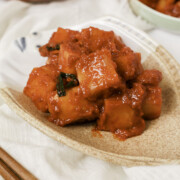
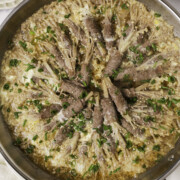
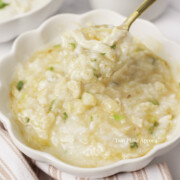
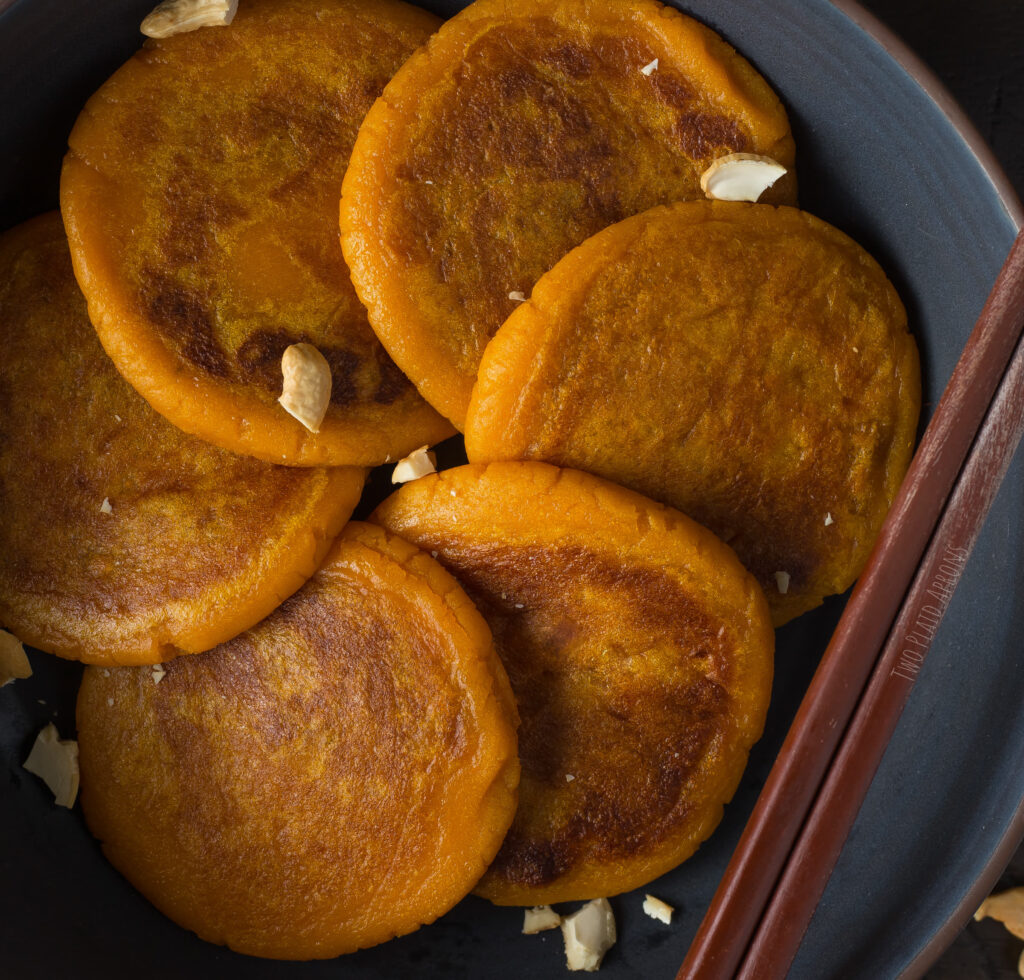

 Best practice is to flatten the dough to about ¼ inch thick or a tad thinner, then fill it with about 1 Tablespoon of filling.
Best practice is to flatten the dough to about ¼ inch thick or a tad thinner, then fill it with about 1 Tablespoon of filling.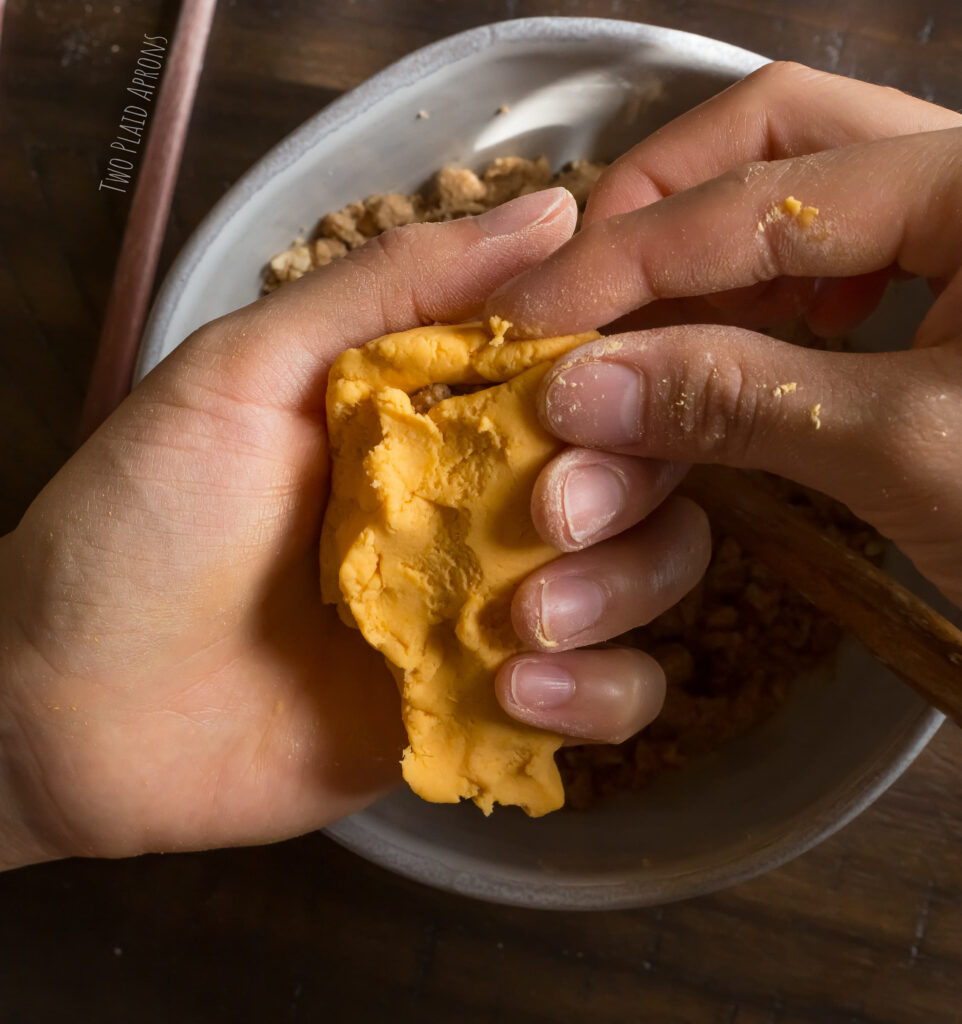


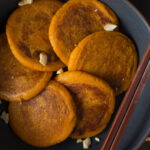



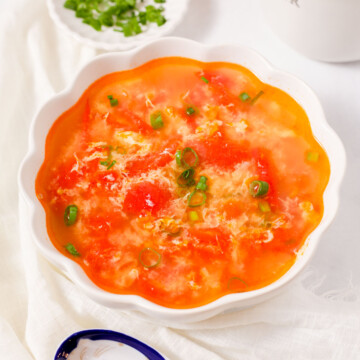
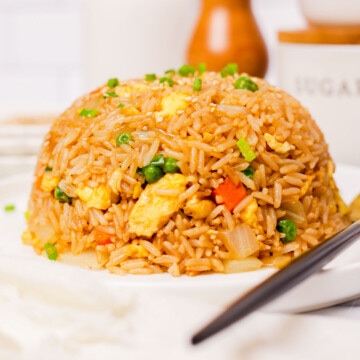
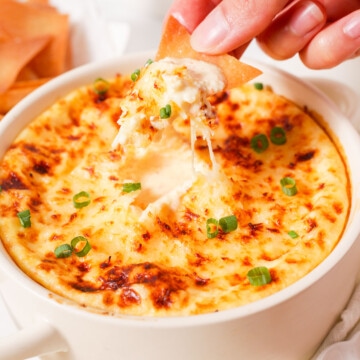
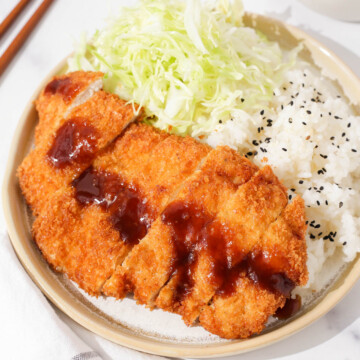
Priya says
Sweet potato pancakes. These looks absolutely delicious. We have never tried anything like this before 🙂 I am sure my family will love these pancakes.
Mei says
Thank you, Priya! It's one of our favorite sweets recipe simply because they're easy to make and tastes like childhood. We hope you and your family enjoys it as much as we do!
Dala says
Mine came out all mushy on the pan. What could have gone wrong? :<
Mei says
Hi Dala! Thank you for trying out our recipe!
We're sorry to hear that the mochi pancakes came out mushy. It should not have. I'm not sure what the cause may be because we've never had issues with rice flour goodies coming out mushy. =\
Did you use glutinous rice flour? And was the mochi pancakes cooked all the way? Once cooked, whether the dough is on the drier or wetter side, it should become chewy. When rice flour dough is cooked, it should have a bounce when you press down on it and it'll go from an opaque orange to more of a translucent orange.
I hope this helped. Please let us know if there's anything else we can help you with! =)
Happy baking!
Mei
Dala says
Hi Mei!
Thanks for the reply. I suspect it was I didn't use enough rice flour. I'll check my measurements and make sure everything is right next time!
Mei says
No problem! Hope it works out! ❤️
Emilia says
These pancakes are crazy good! I cant believe how well they turned out on my first try. Thank you!
I didn't have cashews on hand, so I used half black, half white sesame seeds. The dough was also slightly too tacky, so I went with a couple tablespoons more flour. They're fantastic, I will definitely be making them again 🙂
Mei says
Hi Emilia!
Thank you so much for trying out our recipe! So glad they turned out well for you, and we're so happy that you were able to adapt the recipe to your own! We don't always have cashews on hand either, so our go to nuts are peanuts or pecans.😁
Bake with love!
Mei ❤️
Loli says
I tried these for the first time today and they came out perfectly. I used mochiko flour and orange-flesh yams/sweet potatoes. Only thing was I had to use more flour than called for because my sweet potatoes were full of moisture. The spring-back-when-poked test to see if they're done is a great tip. Thanks!
Mei says
Hi Loli!
Thank you so much for trying our recipe! So so happy that you enjoyed it and that the mochi pancakes turned out well! Haha, thank you! Glad the poking test was helpful! =D
Bake with love!
Mei ❤️
Jon says
Amazing recipe! Did this with Japanese and purple sweet potatoes, as well as almond butter and toasted almonds because those were all I had at home. I slowly added the glutinous rice flour in, and did not add the entire cup as I stopped when I felt that the mixture was already pliable. Despite being purple, the pancake did turn a bit translucent when ready, so your description was still apt. Absolutely scrumptious, just nice amount of crisp and chewiness, will definitely make again! Thank you!
Mei says
Hi Jon!
Thank you so much for trying our recipe and sharing your experience! That must have been a beautiful purple! We'll have to try it with the Japanese purple sweet potatoes next time we make these mochi pancakes.
Happy cooking!
Mei ❤️
Taylor says
Can you use canned sweet potato puree?
Mei says
Hi Taylor! You can use sweet potato puree, however you may need to use more rice flour since the moisture content can be different than steamed sweet potatoes. Also, you'll want to heat up the puree until hot before adding the rice flour. The heat is important. It kind of "cooks" the rice flour, helping it keep its shape and makes the dough easier to work with. Hope this helps =)
Mei ❤️